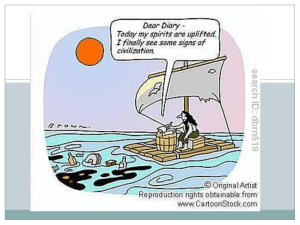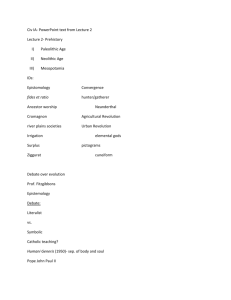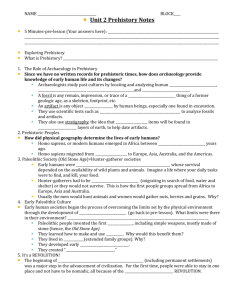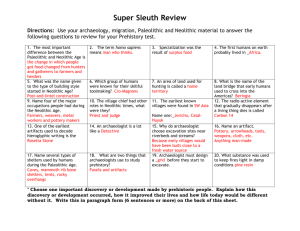Quarter 1 Social Studies Assessment: Early Civilizations
advertisement
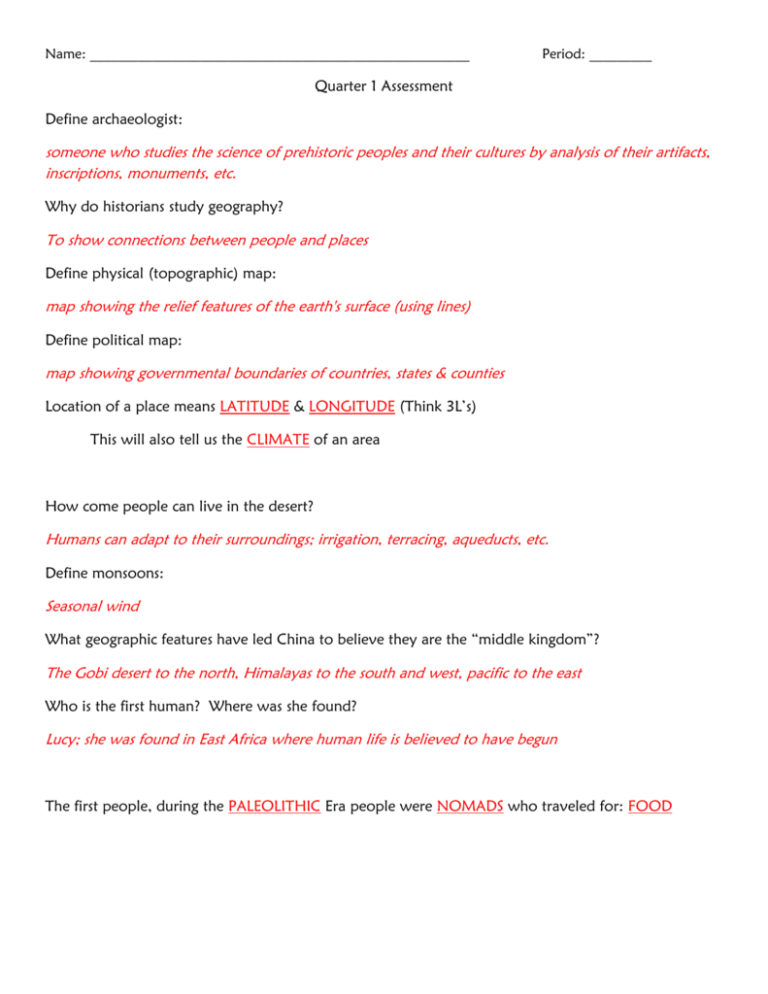
Name: _______________________________________________________
Period: _________
Quarter 1 Assessment
Define archaeologist:
someone who studies the science of prehistoric peoples and their cultures by analysis of their artifacts,
inscriptions, monuments, etc.
Why do historians study geography?
To show connections between people and places
Define physical (topographic) map:
map showing the relief features of the earth's surface (using lines)
Define political map:
map showing governmental boundaries of countries, states & counties
Location of a place means LATITUDE & LONGITUDE (Think 3L’s)
This will also tell us the CLIMATE of an area
How come people can live in the desert?
Humans can adapt to their surroundings; irrigation, terracing, aqueducts, etc.
Define monsoons:
Seasonal wind
What geographic features have led China to believe they are the “middle kingdom”?
The Gobi desert to the north, Himalayas to the south and west, pacific to the east
Who is the first human? Where was she found?
Lucy; she was found in East Africa where human life is believed to have begun
The first people, during the PALEOLITHIC Era people were NOMADS who traveled for: FOOD
PALEOLITHIC CHARACTERISTICS
Made TOOLS & WEAPONS
{sticks/spears from stone, bone, wood}
Developed LANGUAGE
{able to communicate}
Used FIRE
{cooking, warmth, protection}
NEOLITHIC CHARACTERISTICS
A. Permanent Settlements – people sheltered
together in villages
B. New Social Classes –divisions in power
C. New Technology –new tools, wheel, plow,
metal
Made CLOTHING
{using animal skins}
Nomads traveling for food
*See last page for more
The Neolithic Era becomes a turning point in history. Why?
With the introduction of farming, settlements begin and we see people settle down and specialize their
skills
Define Polytheism:
Belief in many gods
What are the characteristics of a civilization?
highly organized group of people with their own language and ways of living; characteristics: record
keeping, advanced cities, specialized workers, institutions (government), advanced technology
Why were all early settlements on rivers?
Rivers were necessary for water, irrigation, and transportation
RIVER(S)
MESOPOTAMIA
TIGRIS &
EUPHRATES
HOW DID THEY ADAPT TO
THEIR GEOGRAPHY?
1.Dug irrigation ditches – lack
of water (Unpredictable
flooding combined with
periods of little or no rain)
2. Built City Walls – lack of
natural barriers
3. Traded – lack of natural
resources, especially building
materials
EGYPT
INDIA
NILE
INDUS
Irrigation for flooding
Buildings were
constructed of sun-dried
or kiln-fired mud brick
WHAT ARE THEIR
ACCOMPLISHMENTS?
WHEEL,SAIL,PLOW
WRITING, BRONZE
WORKS,NUMBER SYSTEM
(60)
ARCHES
COLUMNS
RAMPS
ZIGGURAT
Cuneiform
Sumerian writing that
consisted of pictographs
Developed a number
system based on 60
Ex.) 60 seconds = 1 minute
Calendar
Geometry
Cosmetics
Heart/pulse rate
Splints
Surgery
Treatment -fevers
Private bathroom & toilets
built of brick with a
wooden seat
Pipes connected to each
CHINA
HUANG HE
(YELLOW)
Isolation – natural
geographic barriers ex:
Pacific Ocean, Himalaya
Mts, Gobi Desert, Plateau
of Tibet – cut off China
from other civilizations
Chinese – others
“Barbarians”
Center of the world –
“MIDDLE KINGDOM”
house carried wastewater to
underground sewer system
Roads/Canals
Coined Money
Silk
Tools – sickles, knives, spades
Blast furnaces –cast iron


